Kansas City Chiefs’ QB Patrick Mahomes cracks his helmet—the story behind the photo
- Oops!Something went wrong.Please try again later.
EDITOR’S NOTE: A great news photo tells a story. There is usually a story to tell about how those great photos came to be. This is the story behind the photo of Kansas City Chiefs quarterback Patrick Mahomes’ helmet cracking when he smashed into a Miami Dolphins defender Saturday during the blistering cold AFC Wild Card game as told by Star visual journalist Emily Curiel who captured the iconic moment. The photo has received millions of views on various social media outlets.
It all starts with being prepared to shoot the game. That means having the right photo gear, and, at this particular game, the right clothes.
About a month ago, I had a conversation with AP photographer Godofredo Vásquez via Instagram in regard to his camera settings for shooting football. I was struggling with my game photos being grainier than I wanted. He suggested switching from the 180-400mm f/4.0 zoom lens I was using to using a fixed focal length 400mm f/2.8 lens. “Nothing cleaner than that,” Vásquez advised.
The difference between the lenses, besides one being a zoom lens and one being a fixed focal length,. was the difference in apertures. The f/2.8 aperture on the 400mm lens allows more light to come in which allowed me to set my ISO, the light sensitivity setting of the camera, to 2,500 rather than something higher. A higher ISO usually means more grain, the speckled noise you see in photos shot in low light conditions.
I’m in my second year as a photojournalist. I’m still navigating the intricacies of the sports world, the unique experiences, and the art of capturing moments. Much of my growth can be attributed to my exceptional colleague Nick Wagner, who has been instrumental in teaching me the nuances of cropping and efficient photo filing workflows at a rapid pace.
For the first time at a Chiefs game this season I was using the 400mm lens.
To prepare for the bitter cold weather I’d be shooting in I sought out my warmest long sleeves, leggings and hoodies. A recent addition to my gear was an awesome jacket from Adidas called Terrex. It’s waterproof, windproof and snowproof, an all-around essential. The jacket became the outermost layer over my meticulously layered clothing.
Here are how my layers progressed from inside out. It started with a sports bra and compression workout shorts as the base layer in anticipation of body sweat despite the cold. Those were followed by thin socks, fleece leggings covering my entire foot, compression workout pants, thick fuzzy socks, sweatpants, a turtleneck tucked into compression pants, a thermal tucked into sweatpants, a Patagonia zip sweater, an extra-large hoodie (typically reserved for workouts), a Carhartt face beanie that covered my head down to my neck, snow pants and Ugg boots. The choice between Doc Martin boots and Uggs leaned heavily toward the latter for warmth though the sole on one my Uggs succumbed to the cold by night’s end.
I was uncertain which of my gloves would provide the most warmth. Consequently, I brought all three pairs, ultimately opting for the thickest despite the challenge they posed in handling camera settings. Stocking up on hand warmers and toe warmers, I felt well-prepared, drawing from past experiences of shooting games with temperatures in the 20s. Memories of discomfort during critical games fueled my determination to be thoroughly prepared for this event. In such instances, I struggled to concentrate on my work, a challenge I aimed to overcome with meticulous readiness for this game.
I packed my equipment, which consisted of the heaviest roller bag containing my three camera bodies, three lenses, and a lens cleaning kit in case my lens got dirty or foggy. I had my backpack with a laptop and extra batteries for all three cameras, memory cards, memory card readers, an audio cord, headphones, and chargers for my Nikon Z6II camera.
I also had my 400mm lens, which I carried in a special backpack for big lenses.. To round this load off, I had a tote bag for miscellaneous things like extra gloves, extra face beanies, snacks (can’t forget the snacks), and an abundance of hand and toe warmers.
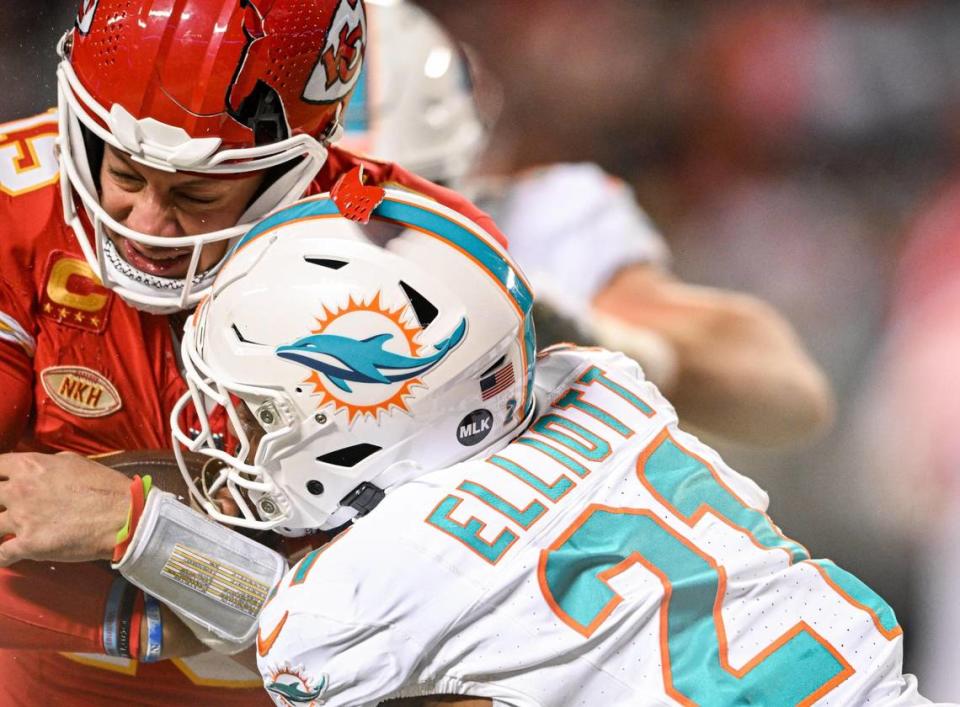
Driving around looking like a marshmallow, I wanted to arrive at Arrowhead Stadium a few minutes before the gates opened. When I unpacked my equipment, I had to walk it right up to the security checkpoint. That’s about a two minute walk on a nice day, but this was a subzero degree day. A trip that usually takes 10 minutes from my car to the photo workroom took me about 30 minutes because my hands kept going numb and I couldn’t feel the tips of my fingers while I tested out one of the pairs of gloves I had. I had to switch them out and put on my thicker pair mid-walk.
I had four heavy bags that I had to carry, plus the five to six layers of clothing I was wearing. In the miscellaneous tote bag, I added a tripod because I’d be shooting video of postgame press conferences and added my harness to hold my two cameras, my monopod, and a heavy Hydro Flask with 32 oz. of water. I was EXHAUSTED! I arrived at the Chiefs press room and set up my tripod and audio equipment to shoot the postgame podium appearances by coaches and players.
By the time I got to the photo room, I had to take off one layer of clothing; it was a lot. I set up my editing station, trying to be as organized as possible since there were SO MANY photographers and videographers during that game. There were so many people that some photographers didn’t have space to set up for editing.
After setting up my editing station, I harnessed two of my cameras—one with a 24-70mm lens and the other with a 70-200mm lens—over the layers of clothing. I placed hand warmers in my thinner gloves, which had the index and thumb tips detached for shooting. In my fanny pack, I carried extra batteries, memory cards for all cameras, a USB for sending photos to my editor, sanitizer and numerous hand activated warmers to prevent battery drain in the cold.
One of our assignments was to capture pop star Taylor Swift making her way into Arrowhead before the game. Testing my gloves with warmers in the cold, I decided they were not going to hold up for the game. As I walked back to the workroom after photographing Swift, I noticed my foot getting colder. The sole of one of my Ugg boots was coming apart. That meant adding extra toe warmers.
I filed photos of Swift while having “dinner” courtesy of my colleague Nick who brought it down from the press room. After our meal, we prepared to head onto the field around 6:45 p.m.
I usually shoot the Chiefs games from the sideline with the Chiefs’ bench but for this game I offered to trade with Nick and go shoot on the visitor’s side. Nick insisted that we continue to shoot on the sides we had worked before, so I stuck to shooting from the Chief’s sideline.
I chose to wear my thick gloves to prevent my fingers from going numb. The thick gloves allowed me to insert hand warmers into the pockets and provided significant relief from the cold. Throughout the first half of the game, I frequently took them off and put them back on to transmit photos directly from my camera while on the field. I had to remove my gloves while shooting sometimes to operate the finer controls on the camera.
All night I alternated between wearing and removing my gloves. At one point I had to hold a hand warmer in my hand while operating the camera and shutter button. The wind felt like dry ice on my skin. Having my hand out without gloves caused my fingers to go numb within seconds.
The condensation from my breathing created icicles on my eyelashes. Both of my beanies accumulated ice and froze.
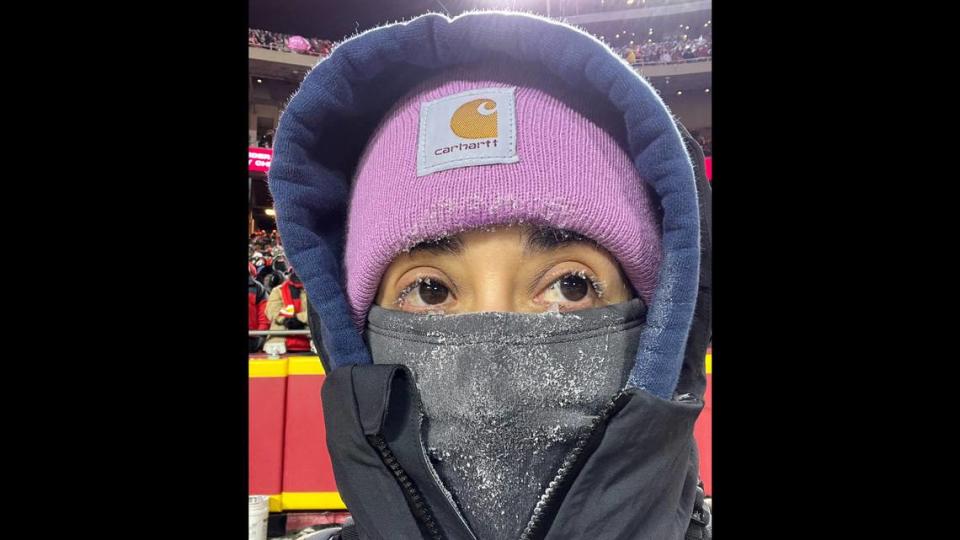
At the end of the first half I hustled as fast as I could back to the workroom to start editing. Hustling back requires staying out of the way of players leaving the field and carrying the 400mm lens attached to a Nikon Z9 body through the access tunnel and up a flight of stairs to the workroom. I immediately edited my take that I hadn’t sent from the field as fast as possible. I constantly monitored the 12 minute halftime now counting down on the timer I set before heading in. I filed seven photos, as I had already sent most of my good ones from the field. It took me about 15-20 minutes to sort through the 800 frames and choose eight good frames to send to my editor.
When I was done with my edit I headed back out to the field for the third quarter. It took me shooting two plays to recompose myself and acclimate to the biting cold. A shiver ran around my shoulders and neck due to the lingering warmth and sweat I worked up while working indoors.
While getting set for the next play, I noticed Kansas City Chiefs quarterback Patrick Mahomes deep in thought about his next move. Holding my Z9 camera to my eye and pressing the shutter, I fired off a sequence of photos that captured mostly the grass on the field as I worked to lock in on Mahomes scrambling with the ball. My 400mm lens worked at locking in its focus on Mahomes while he scrambled toward me. The players were closing in and I struggled to adjust myself in the short 40 second long play. Amid the chaos of the moment my ADHD led me to focus on Mahomes’ facial expression more than anything else.
When the play was over, I didn’t think there was anything extraordinary about it other than it was a good scramble by Mahomes.
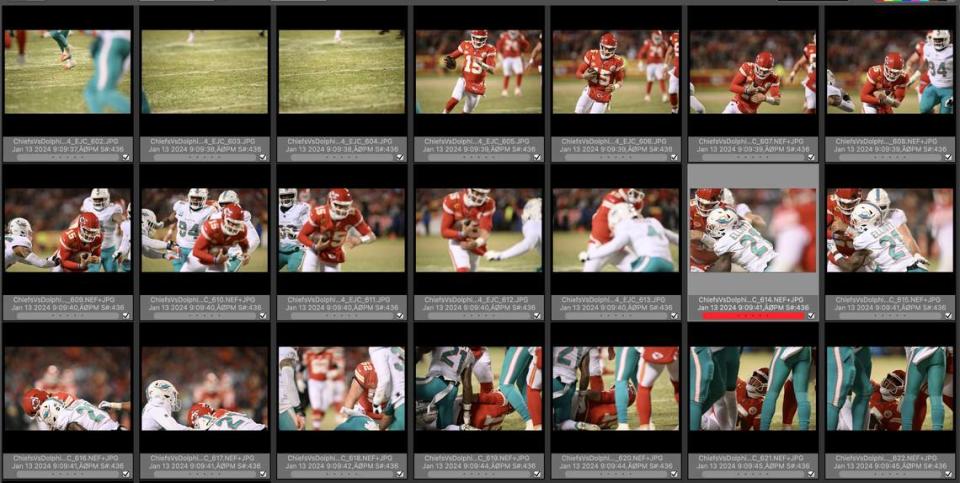
While selecting photos to send to my editor from the sideline, I saw Mahomes switching out his helmet. I thought: Hmm, that’s odd. I wonder why he switched out his helmet? At this point I didn’t realize that his helmet had cracked.
I returned to tagging photos. There was one in particular that I debated sending since most of Mahomes’ helmet and shoulder were not in the frame. The decision oscillated between two shots, the rest were either blurry or the moment had passed, leaving only two viable options. I chose the one where his face was in crisp focus.
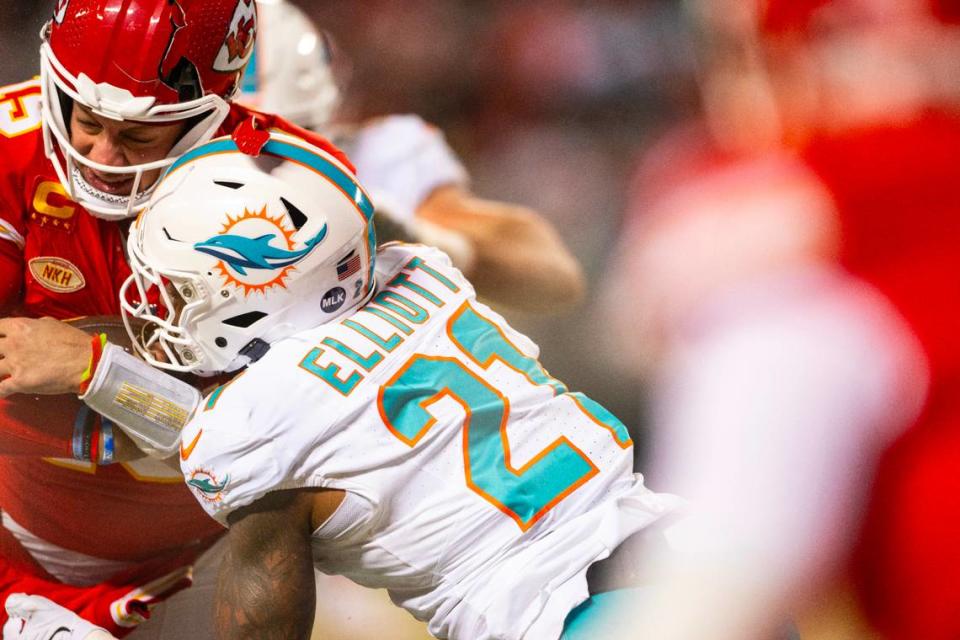
I was scrutinizing these photos through the tiny viewfinder on my camera. The larger review screen on the back of the camera was operating slowly due to the intense cold so I relied on the view through my electronic viewfinder to edit the photos. I took advantage of a 3 minute break in the action to send what I tagged on my camera to my editor. I was just doing my job without dwelling on what had happened. The data on the frames I sent show the settings on my camera were 2500 ISO, with a 1/2000 sec. shutter speed, with my aperture set at f/ 2.8 aperture on the 400mm lens.
After the game concluded I grabbed a few shots of players leaving the field. I had already sent photos of the significant plays from the second half remotely from the field to my editor. There was still work to be done though. I still needed to go inside and shoot video of the postgame news conferences. I also had to edit and send photos to use for file images but those could wait until later.
As I was scrambling to put some of my equipment away and reconfigure gear to shoot video, Nick showed me an Instagram post that the Kansas City Star posted. It was a collage of photos we had taken from the game. He highlighted one photo he liked, but I wasn’t paying attention due to my ADHD brain, and I was also in a rush to get to the postgame presser.
I made my way to the press room in haste and arrived right on time for the interviews. While Kansas City Chiefs head coach Andy Reid spoke I received a text notification from a sports colleague regarding a tweet from The Sporting News on its X account. They had retweeted my photo posted by Kansas City Star sports editor Jeff Rosen. Initially I was confused because the photo wasn’t in its full horizontal format but it was cropped into a vertical instead. I soon realized that Mahomes’ helmet had cracked and broken when he collided with a Miami defender at the end of his third quarter scramble. My immediate text response was, “Oh my goodness, the funny part is that I didn’t even know it was broken, ha ha.”
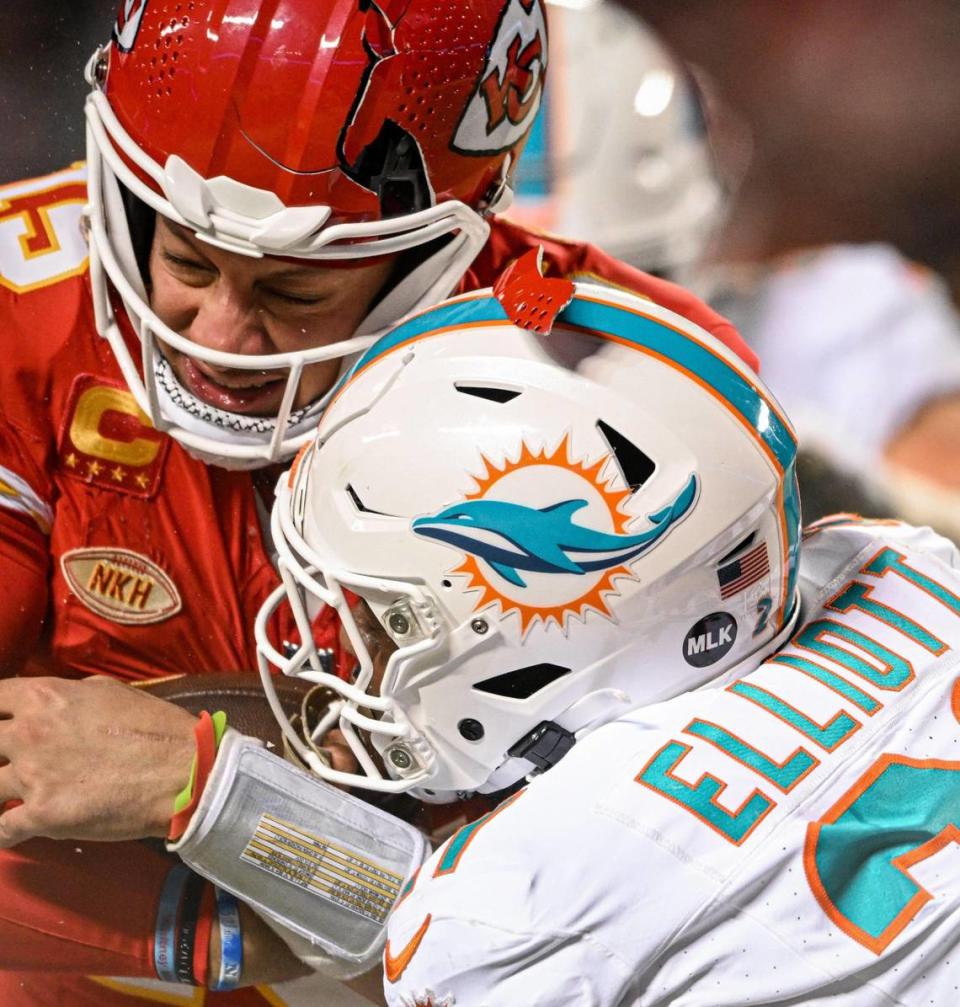
From that moment on, I struggled to concentrate on what was happening in the postgame presser while attempting to wrap my head around this unexpected turn of events. Finally, when Mahomes came to the podium and spoke about the helmet, that’s when I exclaimed holy sh*t!
After the presser, I returned to the photo room to upload my videos to be edited by my colleague Tammy Ljungblad. I packed up my four heavy bags and braved the subzero weather to reach my car. I sat in the car until it warmed up and was bombarded by continuous notifications on my phone. I wondered: What is happening?
It was midnight by the time I got home from the game. I unpacked, settled in, and tried to unwind after the intense game.
While savoring my chicken burrito, I realized the unexpected impact my photo of Mahomes’ helmet cracking would have. It’s fascinating how, amid challenging weather conditions, I captured one of my best games. That reaffirmed my dedication, determination and relentless pursuit to constantly improve which echoed the wisdom of my San Francisco State professor, Scot Tucker, who once inspired our photo class with the mantra “We’re making bad photos good, good photos better, better photos great.”
In retrospect, if it weren’t for Nick’s insistence on shooting the visitor’s side or if I had taken longer to file photos during halftime and then opted to shoot from the visitor’s side for the second half — or if I had never chosen the photo because Mahomes was partially out of the frame, this shot may have never been published.

